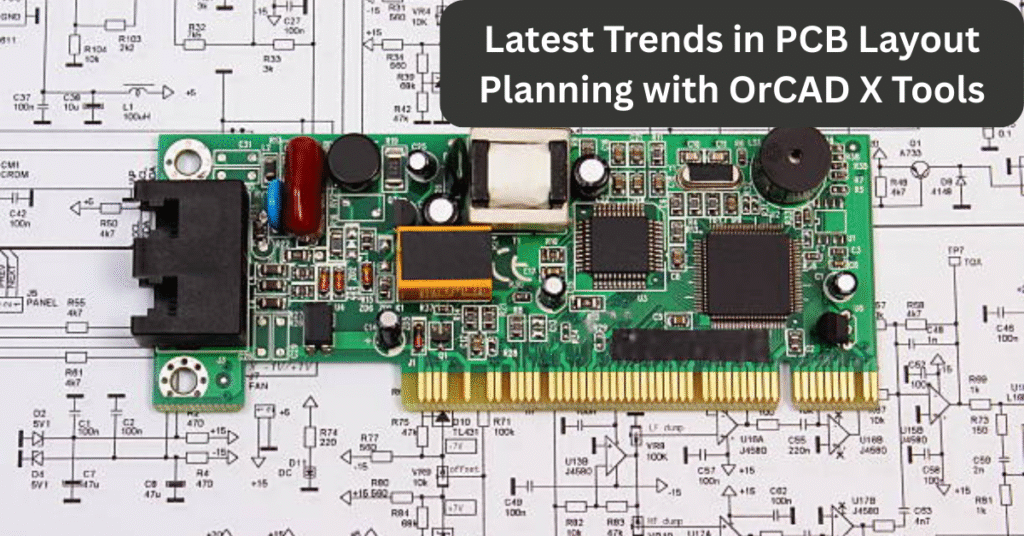In the fast-evolving world of electronics, streamlining PCB layout planning has become essential for maximizing design efficiency, minimizing errors, and meeting faster product development cycles. Whether for consumer devices, automotive systems, or industrial electronics, today’s engineers rely on refined planning processes and advanced layout strategies to stay ahead of growing design complexity. Among many strategies, businesses are increasingly leveraging PCB layout services to ensure that their designs are optimized for both performance and manufacturability.
With 2025 witnessing major shifts in design automation, AI integration, and cloud-based collaboration, it is crucial to understand the latest trends that define how layout planning is approached in professional design environments.
Why Streamlined PCB Layout Planning Is Essential
Modern printed circuit board designs must balance size, performance, and manufacturability — a task that requires tight coordination between schematic design, layout, simulation, and verification. Poor planning can lead to costly iterations, EMI issues, signal degradation, and thermal management problems.
Streamlined layout planning ensures:
- Efficient component placement and routing
- Reduced signal interference and crosstalk
- Better thermal distribution
- Compliance with industry standards
- Faster time-to-market
Professional PCB layout focuses on creating layouts that are both electrically sound and manufacturable, aligning with the growing demands of high-speed and compact designs.
Trend 1: AI-Powered PCB Design Assistance
Artificial intelligence is being embedded in PCB layout tools to automate complex decision-making. AI can now suggest optimal component placement, auto-route traces based on signal integrity rules, and predict potential DFM (Design for Manufacturability) violations even before fabrication.
This shift reduces human error and accelerates layout cycles, especially in iterative environments. Designers can now focus more on creative problem-solving rather than repetitive layout tasks.
Trend 2: Constraint-Driven Design Planning
Constraint-driven design is not new, but its adoption is accelerating in 2025. Rather than manually checking design rules at the end of the process, modern layout planning integrates constraints early on during schematic capture and placement.
These constraints can include:
- Trace width and spacing for signal types
- Clearance rules for different voltage nets
- Differential pair routing for high-speed signals
- Length matching for timing-critical traces
This proactive approach enhances first-pass success rates and aligns with industry best practices followed by leading PCB layout services.
Trend 3: Cloud-Based Collaboration and Layout Sharing
Cloud platforms are enabling layout teams to work together in real-time, regardless of geographical location. With the growth of remote and distributed engineering teams, collaboration tools now allow simultaneous layout editing, instant commenting, and automated version tracking.
These collaborative environments streamline approvals, reviews, and handoffs between layout engineers, hardware designers, and fabrication experts, greatly improving efficiency in complex projects.
Trend 4: Integration of SI/PI Analysis in Layout Tools
Signal Integrity (SI) and Power Integrity (PI) concerns are now addressed during layout planning, not after. Modern layout platforms allow designers to perform in-tool simulations to detect ringing, overshoot, ground bounce, and other potential issues. This integration saves time and avoids costly redesigns. Layout planning is no longer isolated; it’s a dynamic process that responds to electrical and thermal feedback in real-time. A deeper understanding of how planning tools can support this level of integration is explored in this guide on how OrCAD X can be ideal for PCB layout planning, highlighting how evolving layout platforms meet the modern designer’s needs.
Trend 5: Emphasis on Design Reuse and Modular Layouts
With product development cycles shortening, many teams are shifting toward modular designs that promote reuse of proven layouts. These reusable blocks, or design IPs, can include power supply sections, communication interfaces, or sensor modules.
This reuse improves layout consistency, reduces risk, and ensures compliance with known standards. It also allows PCB layout services to deliver faster, more reliable solutions by integrating previously validated design modules.
Trend 6: Focus on Electromagnetic Compatibility (EMC) Early in Layout
EMC planning is critical, especially for devices operating in noisy environments or under regulatory constraints. More layout planners are now performing early-stage EMC checks and layout modifications, such as:
- Ground plane segmentation
- Guard traces
- Filtering and decoupling capacitor placement
- Proper layer stack-up planning
By addressing EMC at the layout stage, teams avoid post-manufacturing headaches like emissions testing failures or field malfunctions.
Trend 7: Increased Demand for HDI and Flex PCB Layout Expertise
As devices shrink, high-density interconnect (HDI) and flex PCBs are becoming the norm. Designing layouts with microvias, blind/buried vias, and flexible routing paths introduces new planning challenges.
Layout engineers must now factor in:
- Mechanical bend tolerance for flex circuits
- Impedance control in ultra-narrow traces
- Layer stack-up that balances density and cost
As a result, experienced PCB layout services are in greater demand to handle these next-gen designs with precision and foresight.
Trend 8: Real-Time DFM Feedback from Fabrication Partners
Today’s layout planning isn’t just about design—it’s also about preparing for fabrication. Tools now offer real-time DFM (Design for Manufacturability) feedback, ensuring that layout decisions align with the fabrication house’s capabilities and constraints.
This proactive feedback loop allows for:
- Minimized fabrication risks
- Faster prototyping
- Lower costs due to fewer board revisions
The best layout strategies incorporate direct input from fabrication teams or through integrated DFM checkers.
Trend 9: Sustainability and Power-Efficient Design Planning
Environmental concerns and power efficiency are driving new trends in PCB layout planning. Engineers are increasingly focused on minimizing power losses, reducing trace heating, and using sustainable materials.
This involves:
- Shorter power traces to minimize voltage drops
- Better grounding to reduce EMI
- Eco-friendly substrate choices
- Smaller board footprints to reduce waste
As sustainability becomes part of the design conversation, layout planning must adapt accordingly.
Trend 10: Skill Development and Cross-Functional Collaboration
With increasing layout complexity, engineers must stay updated with both tools and industry standards. Design teams are prioritizing skill development in:
- RF layout considerations
- High-speed signal layout
- Embedded component planning
Moreover, layout planners are working more closely with hardware, mechanical, and system engineers to ensure design alignment. This multidisciplinary approach is now central to delivering successful, market-ready products.
The Role of PCB Layout Services in 2025 and Beyond
Professional layout services play a key role in integrating all the above trends into a coherent, manufacturable design. Their responsibilities have grown from basic trace routing to strategic planning, simulation, documentation, and post-layout verification.
In 2025, these services are expected to:
- Leverage intelligent layout planning tools
- Work in tandem with mechanical and electrical engineers
- Ensure full documentation for traceability and testing
- Optimize layouts for cost, quality, and lead time
By working with expert service providers, businesses can streamline the product development cycle while ensuring quality and compliance from the layout stage onward.
Conclusion
As we step deeper into 2025, streamlining PCB layout planning has become more than a best practice; it’s a competitive necessity. With design automation, cloud-based collaboration, AI-driven enhancements, and integrated simulations now standard in modern workflows, layout engineers are better equipped than ever to deliver high-quality designs at speed.
Companies that stay aligned with these trends and leverage professional PCB layout services to implement them will be better positioned to launch reliable, scalable, and high-performance electronic products in an increasingly demanding market.











































